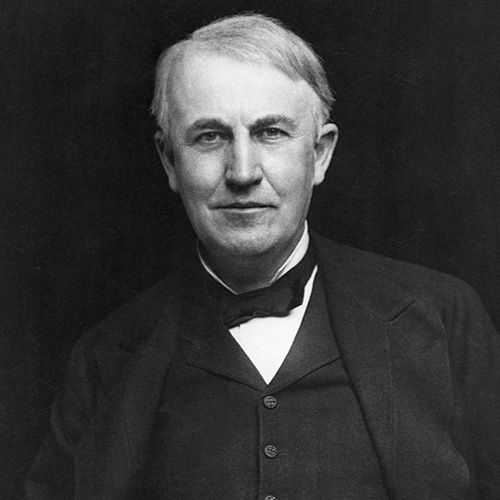Early Life and Education
Thomas Alva Edison was born on February 11, 1847, in Milan, Ohio, as the seventh and last child of Samuel and Nancy Edison. In 1854, the family moved to Port Huron, Michigan, where Edison spent most of his childhood. He received limited formal education, attending school sporadically for about five years. His mother, a former schoolteacher, took on the responsibility of his education, fostering his curiosity and encouraging his independent learning. Edison's early exposure to reading and experimentation laid the foundation for his inventive career. (britannica.com)
Early Career
At the age of 12, Edison began working as a newsboy and candy seller on the Grand Trunk Railroad, operating between Port Huron and Detroit. During this time, he set up a small laboratory in a baggage car, conducting chemical experiments during his free hours. He also printed and sold his own newspaper, the "Grand Trunk Herald," to passengers. (nps.gov)
In 1863, Edison became an apprentice telegrapher, a profession that took him across the United States and Canada. His work in telegraphy not only provided him with technical skills but also exposed him to the rapidly evolving field of electrical communications. (britannica.com)
Inventions and Innovations
Menlo Park Laboratory
In 1876, Edison established a research laboratory in Menlo Park, New Jersey, which became the first industrial research facility dedicated to continuous technological innovation. The laboratory employed a team of skilled workers, including machinists, electricians, and chemists, who collaborated under Edison's direction. This collaborative environment led to numerous significant inventions. (acs.org)
Phonograph
In 1877, Edison invented the phonograph, a device capable of recording and reproducing sound. This invention brought him international fame and was a precursor to the modern music industry. (acs.org)
Incandescent Light Bulb
Edison's most famous invention is the practical incandescent light bulb. While he did not invent the concept of electric light, he improved upon existing designs to create a bulb that was long-lasting and suitable for widespread use. In 1879, he successfully tested a bulb using a carbonized bamboo filament, which could last up to 1,200 hours. (time.com)
Electric Power Distribution
To complement his light bulb, Edison developed an entire electric power distribution system. In 1882, he established the first investor-owned electric utility, the Edison Illuminating Company, which built the Pearl Street Station in New York City. This station provided electric power to customers in a one-square-mile area, marking the beginning of the electric age. (history.com)
Motion Picture Camera
In the late 1880s, Edison and his team developed the Kinetograph, an early motion picture camera, and the Kinetoscope, a device for viewing moving pictures. These inventions laid the groundwork for the film industry. (science.howstuffworks.com)
Later Years and Legacy
Edison continued to work on various projects, including the development of the alkaline storage battery, which he intended for use in electric vehicles. Despite facing competition and challenges, he remained a prolific inventor throughout his life. (tomedison.org)
Edison passed away on October 18, 1931, at his home in West Orange, New Jersey. His contributions to technology and industry have left an indelible mark on modern society. His laboratory and residence are preserved as the Thomas Edison National Historical Park, offering insight into his life and work. (en.wikipedia.org)
Personal Life
Edison married Mary Stilwell in 1871, and they had three children: Marion, Thomas Jr., and William. After Mary's death in 1884, he married Mina Miller in 1886, with whom he had three more children: Madeleine, Charles, and Theodore. The family resided at Glenmont, a 29-room Queen Anne-style mansion in West Orange, New Jersey. (ft.com)
Awards and Honors
Throughout his life, Edison received numerous awards and honors, including:
- –Officer of the Legion of Honour (France, 1881)
- –Matteucci Medal (Italy, 1887)
- –John Scott Medal (Philadelphia, 1889)
- –Elected to the American Philosophical Society (1927)
His legacy endures through the countless technologies and industries that his inventions helped to create and shape. (en.wikipedia.org)
